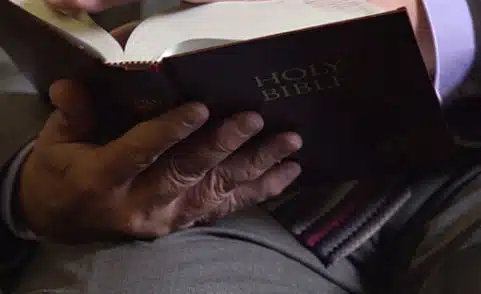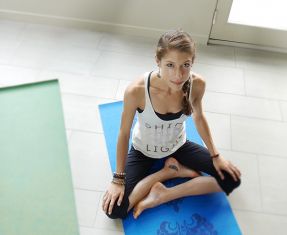
An MRI Helps Return This Pastor To His Pulpit
Posted In: MRI
Staying very still for 45 minutes in an MRI scanner can be too much for someone with claustrophobia. RAYUS Radiology (RAYUS) patient Stuart George described his experience as, “Too tight, too claustrophobic. It wasn’t good for me. I couldn’t handle it.” Desiree Rocovich, RAYUS’s Renton Center manager, calls claustrophobia a common issue and estimates that 40% of her patients mention it during the screening phone call before their first appointment. While some use sedatives to cope, others are looking for help without medication.
 If you’ve ever taken a deep breath before tackling something that makes you fearful, you’ve experienced the power of the inhale
If you’ve ever taken a deep breath before tackling something that makes you fearful, you’ve experienced the power of the inhale and the exhale. “Breathing is everything in yoga,” explains Seattle yoga instructor Enid Spitz. At the heart of her teachings is one of life’s basics: Breathing.
and the exhale. “Breathing is everything in yoga,” explains Seattle yoga instructor Enid Spitz. At the heart of her teachings is one of life’s basics: Breathing.
“It’s really important because it can control your central nervous system. It can calm you down or it can amp you up. It has an effect on everything from your heart rate, to your pulse rate, to the thoughts in your mind.”
Some breathing styles used in yoga are very advanced, but Spitz recommends a basic technique called square breathing. You start with an inhale to the count of four, then you hold your breath for four counts, next exhale for four counts, then hold empty for a final four counts. When you’re finished start over, using your belly and focusing on where the breath goes in your body. “When you take an inhale, focus on expanding your ribs in all four directions,” Spitz explains. “Most of the breathing we do is really shallow in the top of our lungs. But we’ll get more air to our brain, which will calm us down if we breathe really deeply into the low part of our lungs.” Here’s her square breathing how-to:
The more you practice square breathing, the longer you can make the count, building from a count of 4 up to 8 or 10. And Spitz says if, for some reason, the retaining of your breath makes you anxious or uncomfortable, you can just focus on counting the inhales and the exhales and skip trying to retain the air.

“Absolutely anywhere,” says Spitz. “You can do it seated, you can do it laying, you can do it standing, you can do it in traffic. Wherever you would like.” All it takes is counting the inhales, counting the retentions, and counting the exhales. Anywhere. Anytime. Once you get the hang of it, you might just find yourself breathing a sigh of relief.
For more on MRI options for patients with claustrophobia, watch RAYUS’s video about MRI options in Puget Sound and read more about RAYUS’s MRI exam alternative here.